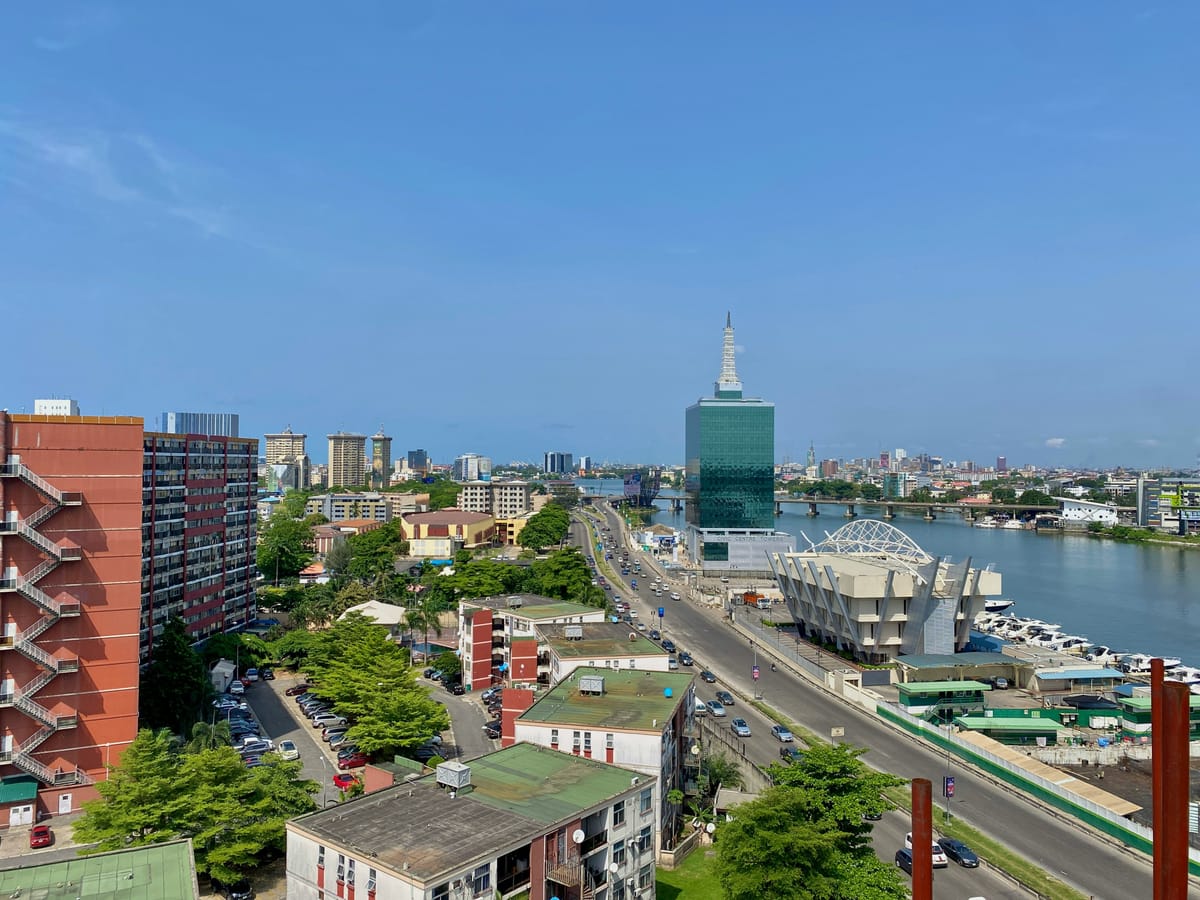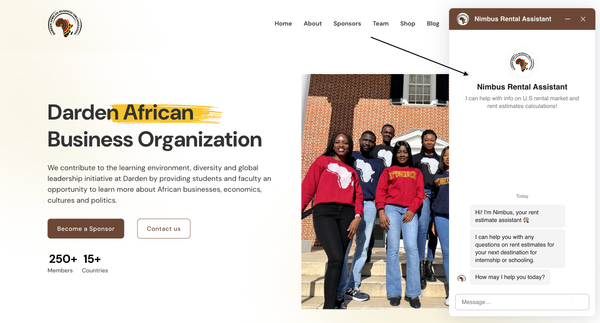Twelve Pillars of Africa’s Future Success

Sub-Sahara Africa is experiencing strong and sustainable economic growth, favourable demographics, rapid urbanisation, increased foreign direct investment, and an expanding urban middle class with a strong propensity to spend. At the same time, economies are increasingly harnessing their natural resources while growing other sectors, including manufacturing, technology, telecoms, financial and business services, retail, and hospitality.
Growth in Sub-Saharan Africa was estimated to have rebounded to 2.4 per cent in 2017 after slowing sharply to 1.3 per cent in 2016. The rise reflects a modest recovery in Nigeria, South Africa, and Angola—the region’s largest economies—supported by an improvement in commodity prices, favourable global financing conditions, and slowing inflation that helped lift household demand.
The pillars
In the long term, 12 macro trends are projected to become pillars of Africa’s future success.
Favourable Demographics
The continent has a young population with a growing labour force — a highly valuable asset in an ageing world. In 2034, Africa is expected to have the world’s largest working-age population of 1.1 billion. Recently, it has had some success in creating jobs — 21 million new stable (including formal, wage-paying) jobs over the past five years and 53 million over the past 15. Stable jobs grew at a rate of 3.8% between 2000 and 2015, 1% faster than growth in the labour force. This is still far from the job-creation trajectory Africa needs to fuel future success, but it is progress.
Rapid Urbanisation
Africa is still urbanising, and much of the economic benefits lie ahead. Productivity in cities is three times as high as in rural areas, and over the next decade, an additional 187 million Africans will live in cities, according to the United Nations. This urban expansion contributes to rapid consumption growth by households and businesses. Household consumption grew at a 4.2% compound annual rate between 2010 and 2015 — faster than the continent’s GDP growth rate — to reach $1.3 trillion in 2015. Africa’s consumers are projected to spend $2 trillion by 2025. However, companies will need to gather detailed market intelligence on where the most promising consumer markets are. Just 75 cities accounted for 44% of total consumption in 2015. Nigerian consumers alone may account for 30% of Africa’s consumption growth over the next decade. Other segments to target include households earning more than $20,000 per annum in South Africa and Morocco, two of Africa’s most diversified economies with a large consumer base, or those earning $5,000 to $20,000 in some of the fast-growing economies of East and West Africa.
Innovation and Technology
This is an area where I certainly have a keen interest as it concerns the African growth space. African economies are also well positioned to benefit from rapidly accelerating technological change that can unlock growth and leapfrog the limitations and costs of physical infrastructure in important areas of economic life. East Africa is already a global leader in mobile payments. Penetration of smart phones is expected to hit at least the 50% mark in 2020 from only 2% in 2010. In Sub-Saharan Africa, cellular-enabled machine-to-machine connections are expected to grow by around 25% per annum to 30 million by 2020, according to GSMA Intelligence, changing the game in sectors from healthcare to power.
It can be argued that the growing adoption of technology and its spillovers to other economic sectors have led to useful innovations in solving problems peculiar to the African market landscape, which can thus be considered a pillar of Africa’s future success.
Expanding Middle Class
Income growth in Africa may not be as fast as some expected, but the trend is still alive as robust economic growth over the past 15 years has led to visible changes across Africa.
‘Middle-class’ households are typically defined as those that spend at least half of their income on goods and services beyond food and basic amenities. The emergence of this ‘consumer class’ helps propel growth to the next level. A rising middle class will increase demand, businesses prosper, employment increase, and economies flourish.
Africa’s middle class is expected to grow from 355 million (34% of Africa’s population) to 1.1 billion (42% of the population) in 2060.
In recent years, the region has witnessed strong expansion in manufacturing and service industries such as telecoms and finance. This is expected to translate into sustained growth of middle-class jobs in the future. African cities will continue to expand, creating dynamic environments conducive to innovation and higher labour productivity.
Although a huge infrastructure gap (like electricity, access to improved water, and improved sanitation) is a major challenge in this region, the emergence of the African middle class can only be sustained if the continent implements strategies that facilitate prosperity for all. Without such measures, the growth of the middle class is likely to be undermined.
Despite the continual challenges, the African middle class is characterized by its strong sense of positivity and hope, which is crucial for economic growth. Thus, it plays a key role as one of the pillars of Africa’s future success.
Sustained Economic Growth
According to the World Economic Forum, Africa's rate of growth has picked up sharply over the past decade to almost 6% per annum, doubling the annual average for the previous decade. Some countries, including Angola, Nigeria, Kenya, and Ghana, have been leading global economic growth tables in recent years, while many of the most developed countries have struggled to recover from the consequences of the global financial crisis.
Some of the positive driving forces supporting the sustained economic growth of Africa include direct foreign investment into Africa, which has been expanding rapidly and growing more than tenfold in the last decade. At the same time, the size of Africa’s middle class, as highlighted above, is exploding. Also, improvements in health and education, alongside investments in infrastructure and technology, have led to increases in worker productivity across many sectors and countries.
However, achieving sustained economic growth is not without challenges and many obstacles. The well-known problems associated with growing youth unemployment, low commodity prices, climate change and a lack of critical infrastructure are among many obstacles.
Many Africans have not seen the expected improvements in the quality of life that economic growth should bring. Therefore, it is imperative that growth become more inclusive and that governments meet the expectations of their citizens, especially younger generations. Otherwise, there is a risk of uprisings, as seen in other parts of the world recently.
African economies must avoid a decline in traditional sectors (particularly agriculture and manufacturing). Experience in some other parts of the world has highlighted the dangers arising from a “resource curse” (otherwise known as the “paradox of plenty”) whereby development is impeded by an abundance of resources (such as oil and Gas) alongside currency appreciation (with negative implications on traditional exports). Economic diversification is, therefore, critical if this curse is to be minimised.
Africa is rising and is on the verge of ensuring prosperity for all. But success cannot be taken for granted. Many obstacles have yet to be overcome, but the signs are positive that Africa will overcome them, and sustainable economic growth will play a key role as one of the pillars of Africa’s future success.
Increasing Foreign and Direct Investment
Africa is the world’s fastest-growing region for foreign direct investment, according to a report from fDi intelligence, a data division of the Financial Times group.
While foreign direct investment (FDI) globally fell 16% in 2014 from $1.47 trillion to $1.23 trillion, influenced by fragility in the world economy, policy uncertainty, and other factors, in Africa, FDI flows remained stable at $54 billion.
While this may seem flat, when you subtract the 15% decline in FDI into North Africa, flows into Sub-Saharan Africa actually rose 5% to $42 billion, riding out challenges like Ebola, regional conflicts, and falling commodity prices. A decline in West and Southern Africa was countered by 33% and 11% growth in Central and East Africa, respectively, which both accounted for $19 billion.
Developing economies are now the world’s largest investor region — they hold a 35% share of global FDI, or $468 billion, representing a 23% increase on 2013 figures. China is now the second largest investor after the US, and its heft in Africa was apparent — five of the 10 economies where its influence is felt most strongly were in Africa. Korea’s influence was most felt in Madagascar, and Brazil in Angola, with which they share cultural links.
The likes of South Africa, Angola, Nigeria and Libya would be readily recognized as top home economies for outward flows. Nigeria, for example, invested $1.3 billion in greenfield projects (a type of FDI where a parent company/country builds its operations in a foreign country from the ground up) in other countries. While it’s the largest host country for FDI on the continent, the country ranked fifth that would not be an obvious choice — Togo. The tiny West African nation saw an inflow of $500 million, linked to its ubiquitous pan-African Ecobank lender.
FDI flows into developing economies were projected to reach $850 billion in 2017. As a result, flows are expected to grow in Africa, the highest optimism of any region, as slow global growth makes emerging markets more attractive.
Although most African countries currently depend on corporations domiciled in other countries for at least 14% of their funding, and while the risks of such high levels of dependence continue to be debated, the role of foreign direct investment into the continent remains significant and thus be considered a pillar of Africa’s future success.
Commodity and Energy Resources
The African continent features many sustainable energy resources, of which only a small percentage has been harnessed.
The challenge of commodities is to make them a source of growth for the African continent. Local demand for commodities is crucial in response to growing African demand and capturing a greater share of added value. And for that, let us not forget a fundamental aspect: the rent derived from raw materials must be managed in the long term with structural policy instruments without falling into the trap of short-term management. Thus, if these challenges can be nipped in the bud with some level of consistency, commodities and energy resources can thus be considered a pillar of Africa’s future success.
Offshoring Destination
Some of the numerous factors that played a vital role in instituting India as an offshoring destination are already present in Africa, especially in countries like Nigeria, Kenya, and South Africa. A population fluent in spoken English, cultural similarity, and a significant talent base supported by time zone parallels make Africa the next outsourcing destination.
Outsourcing to Africa by several European countries affords them significant cost savings. Offshoring services delivered from Africa are positioned as a suitable substitute to onshore delivery hubs while also delivering revenue-generating facilities to clients.
Looking at Africa, it is important to realize that we can analyze offshoring activities in three (3) areas of the continents:
In North Africa, Egypt has become a much more popular destination as American giants such as IBM and EDS have operated here for some time. Morocco has rapidly found its presence as a supplier of outsourcing services to the French market. Until recently, Morocco’s outsourcing market had focused on call centres, but its expansion into banking/insurance, telecom, and IT has been supported by infrastructure investment. A good example is Capgemini’s recent investment in Morocco, providing sourcing services to the French market.
In West Africa, countries like Nigeria, whose business language is predominantly English, have seen a sharp rise in offshoring software development since the introduction of companies like Andela, Google, and other tech hubs across the country. The talent pool for software developers is increasing, which has contributed to the emergence of a significant number of indigenous software development companies.
Moving further south, big outsourcing players such as Accenture, WIPRO, IBM, Genpact, Aegis, and Deloitte consider countries like South Africa the next outsourcing hubs for growing global multinationals.
In all, we are seeing much more complex relationships between African brands and global multinationals, making Africa one of the fastest-growing offshoring destinations in the world. Thus, it can be considered a pillar of Africa’s future success.
Finance and Business Services
As Africa’s internal market expands, a huge demand is growing for personal banking services, business finance, and microfinance. Only a quarter of the continent’s population currently has a bank account, presenting a significant growth opportunity. Retail banking in Sub-Saharan Africa is expected to achieve 15% per year growth for the remainder of the decade.
New forms of banking, such as mobile banking, are emerging. This is being driven by platforms such as M-Pesa in Kenya, which is now used by a reported 70% of Kenya’s adult population. Similar systems have been set up throughout Africa, working with major banks such as South Africa’s First National Bank.
Johannesburg will remain the continent’s leading financial centre, given its strong domestic banking sector and status as the regional headquarters of many international banks. Casablanca, Lagos and Nairobi are consolidating their positions as regional banking hubs, while Port Louis (in Mauritius) is evolving as an offshore banking centre.
This strong growth in business services boosts office demand and creates platforms for success in the African economy.
Infrastructure Investment
The need for infrastructure is enhanced by the willingness of citizens to live decently through increased access to electricity, water, roads and education. The high cost of transactions in Africa highlights the urgency to upgrade infrastructure, support the expanding economies and foster regional integration. Adequate infrastructure provision is thus considered a key prerequisite for the continent to achieve the intended objective of economic growth- and trade liberalization in particular.
Poor infrastructure (in terms of transport, utilities and telecommunications) remains one of the biggest challenges for the African continent, but investment funding is steadily increasing. China, in particular, has become a major source of funding that includes hydro-power projects in Nigeria, roads and railways in DR Congo, Mozambique, Tanzania, Kenya and Angola, and communications in Ethiopia.
With many city infrastructures straining under the weight of rapid urbanisation, several ambitious plans for new satellite ‘cities’ on the edge of Africa’s major cities exist, including Konza Techno City outside of Nairobi and Eko Atlantic on Victoria Island in Lagos.
In order to achieve more growth, Africa needs to improve its business environment and make a real effort in infrastructure development. Investors need to find reliable partners in Africa to allow the continent to unlock solid opportunities for proven profitability. Consequently, this would establish better governance, leading to a better business environment that attracts massive investments and brings success to the African economy.
Rapidly Evolving Commercial Real Estate Market
A real estate boom is a natural byproduct of emerging market growth via rapid urbanisation and expanding middle classes.
The commercial sub-sector of the real estate industry provides great opportunities for returns as Africa’s economic boom is sustained. Of the nearly 23 million m2 in shopping malls in Africa, 21 million m2 sits in South Africa, and 0.5 million m2 is in sub-Saharan Africa (excluding South Africa). Similar figures are found in the office space sub-sector — 2 million m2 in sub-Saharan Africa (excluding South Africa) compared to 4 million m2 in North Africa and 15 million m2 in South Africa. Navigating a blank slate in many instances, real estate investors approach the continent with mixed ambition. Yet, as any veteran real estate investor will characterize the “Africa Opportunity”, commercial real estate can surely earn north of 25 per cent per annum returns, but only after navigating unexpected hurdles, including poor urban planning, unfinished neighbouring infrastructure, and unreliable local developers.
Improving economic management
Business operating environments in Africa are selectively improving, and economic governance is generally becoming more rigorous. Nonetheless, investors’ concerns about a wide range of risks persist, and Africa will remain a challenging balance of risk versus opportunity. Within Sub-Saharan Africa, Accra (Ghana), Lusaka (Zambia), Dar es Salaam (Tanzania), and Maputo (Mozambique) are judged to have the region’s most favourable risk profiles and, combined with their high rates of economic growth, provide among the continent’s most attractive environments for investors.
Final Thoughts…
Although still largely considered an emerging market, the African continent has seen a sharp rise in interest from foreign, local, and regional investors. As local knowledge grows and operations continue to be sustainable, market forces will drive commodity and service terms to be more flexible and competitive.
These are strong reasons to capitalize on the vast opportunities presented in this market space and why now is the best time to invest in your ideas and make Africa a better place.
What other macro trends do you think can contribute to the future success in Africa? Leave your thoughts and share your comments in the section below.




